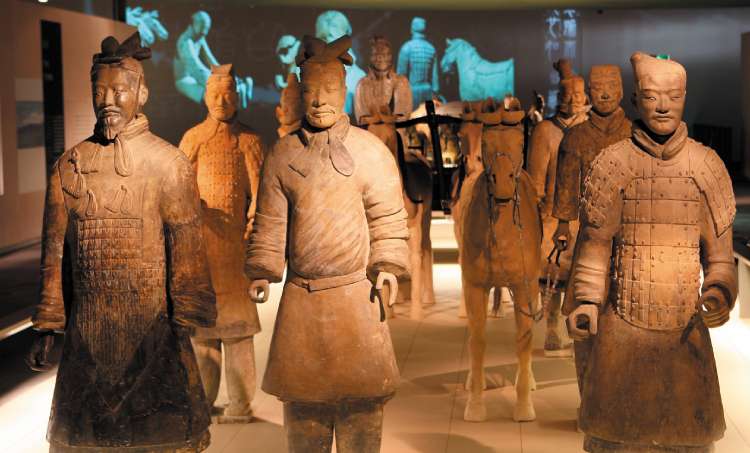Terracotta Army bolsters UK's appeal for tourists

Blockbuster exhibitions ensured that Britain's popularity as a tourist attraction remained high last year despite the unusually wet summer.
Among those registering a big increase in visitors in 2007 was the British Museum – courtesy of its terracotta warriors exhibition – and the Science Museum – which put on the "science of spying".
The Association of Leading Visitor Attractions (Alva), which produced the tourism attraction figures, said those attractions showing the strongest results had achieved their increases through successful, and well-advertised, exhibitions.
The British Museum saw visitor numbers rise by 12 per cent to 5.4 million. The First Emperor: China's Terracotta Army was described as "the hottest exhibition in town". Unprecedented demand to see the figures led to the museum extending opening hours to midnight.
As for the "science of spying" exhibition, its blend of training in codebreaking and spotting a liar led to it being described as "the ideal outing for future 007s" and helped boost the number of visitors to the museum by 11 per cent to 2.7 million in 2007.
London Zoo did even better, with its new gorilla enclosure helping to raise its visitor tally by 25 per cent to 1.1 million.
Liverpool traded in on the pre-publicity for its year as European capital of culture of Culture in 2008, with many of its major attractions showing a dramatic increase. Its World Museum saw figures rise by 37 per cent, the Merseyside Maritime museum by 36 per cent and Tate Liverpool by 17 per cent.
In absolute terms, however, the country's leading tourist attraction last year, despite a 3 per cent drop in numbers since 2006, remained the Blackpool Pleasure Beach, which welcomed 5.5 million visitors.
The tourist attraction with the biggest percentage increase in visitors was the relatively unsung Cragside Estate in Northumberland – up 79 per cent over 2006 to 201,873 visitors. The National Trust-owned estate offers the most technologically advanced mansion of Victorian times. Cragside House, the centrepiece of the estate, was the first building in the world to be lit by hydroelectricity.
While public esteem for politicians may have tumbled, the Houses of Parliament played their part in boosting the tourist industry, seeing 11 per cent more visitors in 2007 (994,926).
Overall, the figures have been described by Alva as evidence that the tourism industry in the UK remains "vibrant".
However, it accused ministers of failing "to take tourism seriously". Robin Broke, its director, said the Government was "preventing the nation's fifth largest industry from optimising its potential earning power and creating significant numbers of new jobs". While some factors, such as the weakness of the US dollar and poor weather, were outside the Government's control, the high prices charged for UK visas were not, he said.
Subscribe to Independent Premium to bookmark this article
Want to bookmark your favourite articles and stories to read or reference later? Start your Independent Premium subscription today.

Join our commenting forum
Join thought-provoking conversations, follow other Independent readers and see their replies